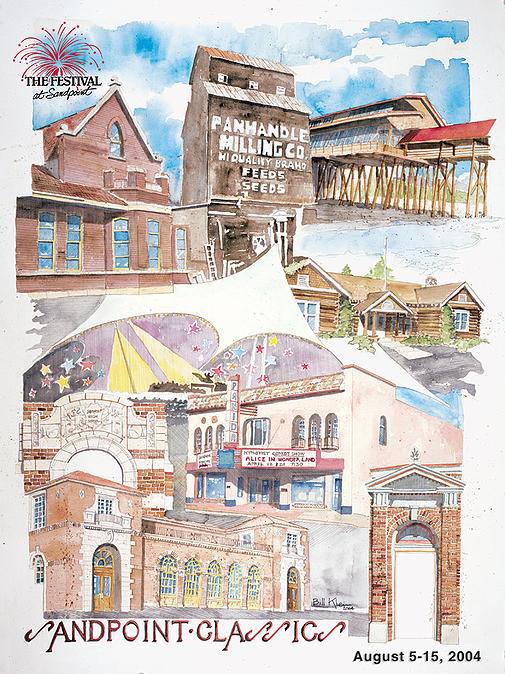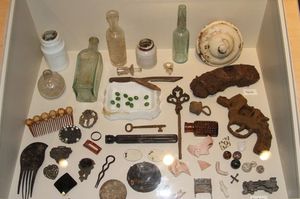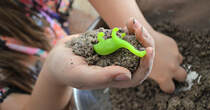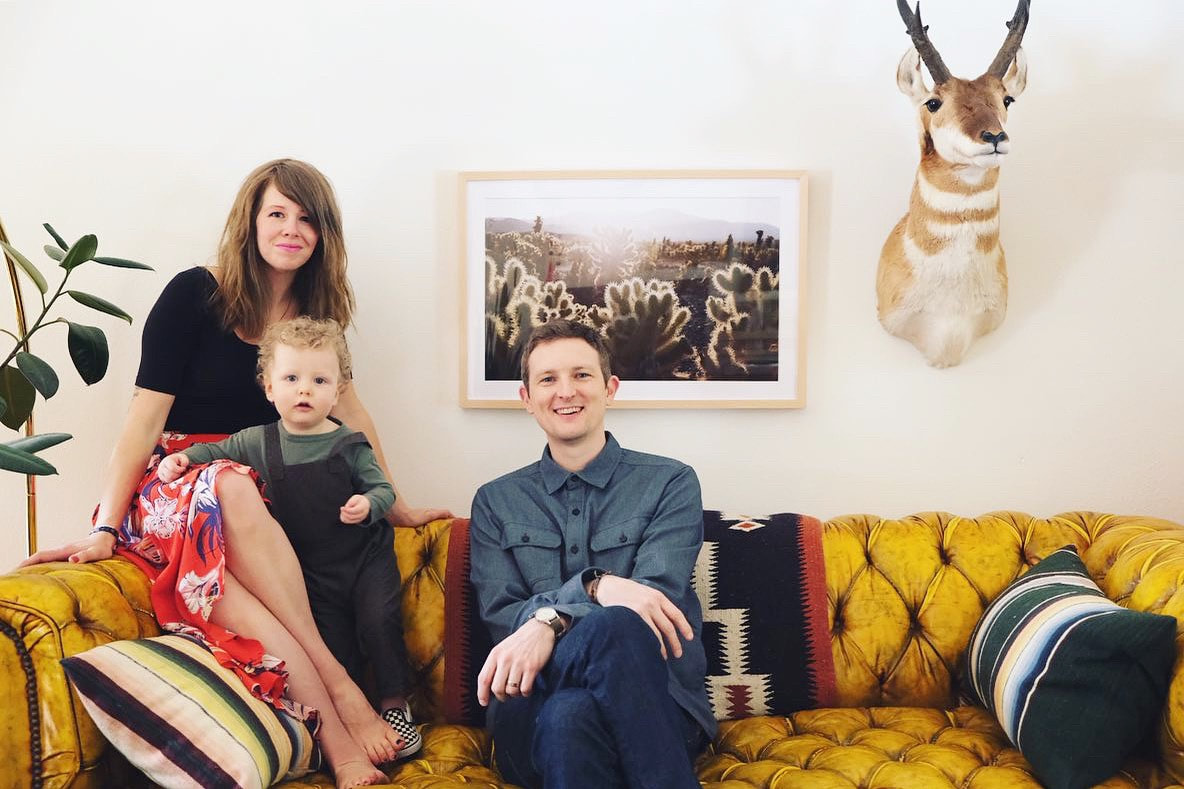|
This is the time of year we begin to see more tourists making their way to town and to the shores of lake Pend Oreille. Even your little ones may notice how things begin to get busier and there are more people at some of their favorite local places. Tourism has played and continues to play a big part in Bonner County history and economy. The many guests to town create the opportunity for you to introduce your child to new and different people from places near and far. It also provides opportunity to explore concepts of empathy, helpfulness, and service. Visitors help to keep our economy alive, and we can help children to understand how to welcome new people and share with them what makes their home special. People come from all around to see our beautiful town. They have been doing this for many many years. Why do you think people visit here? What might they want to see and do? How could you you help them feel welcome? When you meet someone new, you can introduce yourself and welcome them to town. You could ask them where they are from and learn a little about their home. You can even give them ideas of things that they might like to see and do. Talk with your child about what they like best about the place they live. If they are very young and spending lots of time at home (like my kids are) you could talk about places around your yard, house, or neighborhood that they like to spend time. Kids who have had lots of opportunity to explore the region might be able to name places they like to visit around town. Tell your child about how special it feels to get to share your favorite places with other people. You can show them a tourist brochure and see if they are interested in making a poster, a brochure, a commercial, or picture to invite friends, family, and tourists to view their favorite local attractions. Really young kids: Have your child pick a favorite stuffed animal or family member and let your child show them around the house or yard. You can pretend to be the tour guide first and give the tour of your favorite places first. Give your child a chance to learn by watching you play pretend tour guide. If you have blocks or building materials, build a model of a city, a house, or a place that they would like to show off to visitors. If they have memories of City Beach or another local tourist attraction, have them make their own version of it. Older kids: Tell your child that they can be a tour guide for people visiting. They can take on the role in many different ways:
By modeling a welcoming attitude towards visitors and guests your child can begin to understand the significance that tourists play in the economic history and present of Sandpoint. Share your child's creations with us in the comments or #athomewithBCHS.
0 Comments
As my sons were playing in the grass after days of stop and go rain, we were enjoying all the green around us. My oldest son noticed a little brighter shade of green standing out, and plucked his first fir tip off of a young fir tree. We talked about how the tip was going to eventually make new growth, and we marveled at it's shape and texture. Eventually I told him how spruce tips, pine tips, and fir tips have long been used medicinally and for flavoring food and drink. We talked about explorers like David Thompson and wondered if there were days that he collected and dried spruce tips for tea or if he ever snacked on them when food was scarce. Long ago explorers like David Thompson traveled through Bonner County. This was before there were houses, stores, or even roads. He would have to find, catch, and trade for any food he needed. He could have even gathered spruce tips for food just like we are. David Thompson was a map-maker, surveyor, and fur trader that spent some time exploring and mapping the northwest, including Northern Idaho in 1809-1810. He set-up some trading posts in the area, including the Kullyspell house near Hope, Idaho (built by Finan McDonald). We imagined we were early explorers and tromped though the woods collecting tree tips. Finally, we snacked on our fir tips and were surprised by the citrusy pine flavor. Not terrible! Around Mother's Day is the perfect time of year to start looking for spruce, fir and pine tips. All three varieties are edible. Avoid yew, or any other unidentified trees or shrubs. Once you have located and identified safe trees, you can look for the bright green new growth at the tips of the branches. There should be some evidence of a papery brown skin just starting to peel off (like onion skin). This is when they are best and tastiest to pick. Its a lot like picking berries. If you have little children, fir trees are a good choice because the needles are much less pokey than the spruce. The two white lines on the bottom of the flat fir needle also make it easy to identify. Once you have collected your tips, consider these uses:
When I was five years old, I knew I wanted to be an archaeologist when I grew up (spoiler alert, this didn't exactly happen). Regardless, I had a passion for digging in the dirt hoping to discover treasures connected to the past. The first time the concept even occurred to me was when I saw a photo in my parent's National Geographic of the Varna Gold. It was beautiful treasure buried in the dirt (and among skeletons!). As a kid, I was enthralled. It was almost magical when a month later, while digging in my childhood backyard, I turned up a golden pocket watch from 1889. I was hooked. Such a wonder as a child to realize that generations of people before us lived on the same land we are living on. They even left traces of their existences in artifacts. Excavation is an adventurous and tactile way to discover history. We can awaken that passion in our children. Sandpoint is an excellent place to learn about archaeology and excavation. When the Sand Creek Byway was set to pass through the earliest settlement in town, James Baird and Robert Weaver led excavations of the area before construction began. Nearly 600,000 artifacts were recovered between 2005-2008. The BCHS Museum has many great examples of these artifacts on display in the dig room. Archaeologists dig in the ground to look for things that people left behind or lost long ago. The artifacts people leave behind help us learn about what their lives were like. Here are some ways to explore the concept of archaeology with your child: For very small children you can make a sensory bin for them to dig through and discover treasures. Find a tupperware or shoebox and fill it with anything from rice, beans, to sand (depending on your child's age). Hide trinkets in the sensory bin and let your child play with finding and burying them and finding them again. Older kids can plan an excavation and dig outside in a place that you mutually agree on. Don't worry if you think they won't find anything, you never know. The fun is in the search. You can hide artifacts (toys/trinkets/treasures) in a sandbox or dig area and have your child unearth them, record their location, make a sketch of them, and keep a log of their findings. Another idea is to take your children places where they can see real artifacts left behind in plain sight. The old Humbird Mill ruins at the beginning of the Pend d'Oreille Bay Trail, the abandoned logging/farming equipment near Pine Street Woods, the remains of an old boat on Sunnyside... What other evidence of Bonner County past have you stumbled upon that you can share with your children. You can inspire the sense of excavation and discovery by making hidden treasure rocks: 1 cup of used coffee grounds 1/2 cup of cold coffee 1 cup of flour 1/2 cup of salt Wax paper Mixing bowl Some small objects to hide in the dough (plastic animals or dinosaurs work well) How To Make It Have your child stir the together the coffee grounds, cold coffee, flour, and salt until well mixed. Form the dough into a half ball, put the object inside and cover it with another ball of dough. Dry overnight until firm. Then let your child chip away at it and crack it back open to discover the treasure. Or gift it to a friend! Share your discoveries, stories, and creations at #athomewithBCHS
The earliest inhabitants of Bonner County were the Kalispel, which mean "camas people". Camas is the name of a potato like root that these natives survived on, along with other plants and animals foraged and hunted in the region. Later, the pioneers and homesteaders also relied on the land, water, and forests to provide them food. Foraging for plants to make food is incredibly exciting and rewarding for children. Your child may have experience cooking with you, or growing food in a garden, but have they gathered wild ingredients? Now you can introduce them to searching for and gathering wild foods the way the natives and settlers did. Just like baking bread, foraging for food can help children feel a sense of responsibility and autonomy that can help them cope with other challenges in their life. Plus, it may even save you an extra trip to the grocery store. Long ago, before there were stores or even farms, people used to gather food in the wild. Gathering wild foods is called foraging. We can forage for things to eat in our own yard, a forest or even a park. Let's give it a try! One of the easiest foods to forage with very little children is dandelions. This is the perfect time of year to do it. There are tons sprouting in my yard right now! Picking in the morning is best. Also, talk to your child about being safe when foraging. Always check with an adult before picking or tasting something. Be sure to pick in places that have no pesticide or fertilizer use, and away from road runoff. There is a simple recipe for dandelion bread from Langdon Cook, one of my favorite urban foragers. You will only need about a cup of petals for his recipe. He also has great advice on foraging other foods if you check out his blog, The Fat of the Land. Here is: Langdon Cook's Dandelion Bread Recipe While foraging with your child you can tell stories and imagine what it would have felt like to gather most of your food in the wild. You can talk about how different life must have been for the natives and settlers who lived here long ago. If nothing else, you can gather all the dandelions in the yard and make a big pile of them and just enjoy the sunshine with your child. (That's mostly what we did.) I want to try adding some young dandelion leaves to my salad for dinner, and probably gather more tomorrow for the bread recipe.
There are plenty of other bountiful foods to forage in our region. You may already have your favorites (huckleberries anyone?). Share in the comments if you know another local delicacy we can all enjoy. Here are some links to more information about local foraging:
There is nothing more satisfying for a child than being in nature and digging in the soil. As we see a little more sun in the sky, I know that I have wanted to get outside and get my hands in the dirt. This is a great activity for you and your child to feel more relaxed, productive and connect with history. People in our town have been gardening for a long time. Long ago people needed gardens to grow food for their families to eat all year long. People today are still growing gardens for food and for beauty. Let's make our own garden to plant something today.
Whether you start seeds on the window sill, start working a garden bed, or just make a mess in the dirt, talk with your child about your gardening history. Did you garden as a child, did your grandparents? What gardens around town are important to you? Fostering a love of history begins with you. The things you talk about become important to your child. If you reflect on history and pose open-ended questions (e.g. I wonder what kinds of tools farmers used in the olden days?) you develop that habit in your child. The more we think, imagine, question, and tell stories about history, the more they will too. An added bonus, it supports crucial cognitive skills and encourages reflection, empathy, critical thinking, compare/contrast, and creativity. On May 23rd, BCHS plans to host a plant sale to raise funds for the Museum, and to highlight the history of some of our local gardens and gardeners. Please join in by coming to the sale, or help donate plants and garden gear for us to sell (it is a Museum fundraiser). Also, if you know anyone with a great garden and a history to share, please send them our way!
Share your kid's garden pics at #athomewithBCHS or in the comments! Finding things to do as a family during the Stay-Home order has lead to some creative ideas in our community. Bonner County resident Theresa Carlson took a beautiful family portrait that captures a moment with her family during isolation. Last week I wrote about using photos as a way to create a personal historical document and Theresa's project is a great example of a family doing just that. Below you can read about Theresa's experience, and her suggestions on how to make if work for you. What a great way to remember who you were with, where you were living, and how old you (and your kids) were during the 2020 Pandemic .
Theresa, can you tell us a little bit about what inspired your idea to do a family portrait? How was the experience for your family? We were having one of those weekends where we didn’t know what to do, and nothing sounded fun. The weather wasn’t great so being outside was less appealing. I suggested we get dressed up and take some family photos. Since we have been isolating at home for a few weeks now, it felt good to think about the clothes we would put on. This simple activity actually managed to turn our weekend around. Do you plan to keep the portrait as a personal historical record? What will it feel like to look back at the portrait in ten or twenty years? The photos are digital and though we don’t have many printed photos in our home, we do make a photo book every couple of years so that we have something physical to look back on. I think most of us have probably spent time sorting through photos of our own childhood, or of our parents and grandparents. I love referring back to Instagram as a photo record of sorts, but in ten or twenty years it may be obsolete, and really it is no comparison to holding a photo in your hand. Likely these will be printed for grandparents, if not for ourselves, and it will certainly be a good reminder of this time in our lives. What are some tips and tricks for families who want to take a portrait at home? (Did you use a camera and a tripod?) We used a digital SLR camera and tripod, but if you do not have any equipment, just use your phone! Prop it up in a place where you know your family will be in frame and set the self timer, works great in a pinch. Some good natural light will always improve your photo. If the idea of taking traditional family photos doesn’t appeal to you, get creative! Dress up in costume, recreate an old photo, set up a scene inside or outside. Just have fun! If the photos don’t turn out, at the very least you spent some time doing something creative with your family. Let us know in the comments or on Instagram if you take your own Stay-Home self-portrait. #athomewithBCHS Lots of people use writing, photographs, and drawings to record important things that are going on in their lives. Many years from now, people could look at those records and learn a little about what our life is like right now. Last week we invited older kids on our At Home Historians blog to begin keeping a pandemic journal. If this is an age appropriate option for your little one, go for it! Otherwise, I want to introduce a few ideas on how to capture and record the current historical moment for (and with) our children. Life has certainly changed in some ways for most kids, and letting them share their views can be empowering for them. For this activity, have children think about roughly 10 items that are most important to them right now while staying at home. If they fit, they can gather them all in "at home survival pack". Have your child show and tell you what they collected. You could record or write some notes to accompany the photo. Then have your child arrange the items on the floor and lay down among them for a photo. (In the style of Gregg Segal's series Daily Bread). If they are more aware of what is going on, and more sensitive to the changes, talking about things they like doing right now can be calming. Some other ways to create a personal record with little ones:
Be sure to save your record somewhere safe for the future, and be sure to share with us too! #athomewithBCHS Have you noticed that everyone seems to be baking bread lately? I think there are a lot of factors contributing to this phenomenon:
Regardless of why we are drawn to it, baking bread is an excellent way to connect little ones to history. I went to the bookshelf with my son this morning and we picked out my grandmother's cookbooks and searched for a bread recipe. Most of them called for yeast, which we didn't have, so we searched even deeper back in history. We chose a recipe for sourdough bread which simply uses four and water to attract yeast from the environment and makes a great bread (spoiler alert- it takes a couple of days!). Connect your own child to the idea that long ago people made a lot more food at home. Make something that you can't get at the store right now (you could also do broth, cheese, crackers, butter, granola, share more ideas in the comments). Let your child be as involved as possible! Older ones can help pick out a recipe, gather ingredients, and read the steps. Younger ones like to pour pre-measured ingredients and mix and knead with their hands ( I usually put a tablecloth down and let them work on the floor). Very little ones can simply squeeze, hold, and play with dough as a sensory activity. A long time ago people made their food at home instead of going to the store. Today we are going to make some bread at home together. We can imagine what it would have felt like to live long long ago. There are lots of recipe options out there or on your own bookshelf. I will provide a few links here, too.
Don't forget to post a picture of your finished product on Instagram #athomewithbchs Many museums around the world are taking this opportunity to find new ways for people to enjoy their collections (Getty Museum and The Met). You can study art works, photographs, and artifacts closely with your child and then find everyday objects to recreate the art. (I used Instagram's Layout app to help me make a side by side photo) For an added Bonner County connection, take a look at the Adopt an Artifact pages for inspiration. If you visit the Facebook page, there are lots of historical photos you can recreate! Older kids: Let them explore the museum website and pick out any image that they might like to recreate. Post their creations in the comments or Instagram #AtHomeWithBCHS. Study the image really carefully. What do you notice? What do you wonder? What does it remind you of? Have you seen anything around our house that is similar in color or shape? When we look at something really closely we can learn more about it. Younger kids: Show your child the pictures of some of the artifacts from the BCHS Museum and ask them to hunt around the house to find something that looks similar.
For really little kids: Get out a hat, coin, dress, or sled and see if they can match their version of the items to the pictures below. If you cant go to the museum. Make one at home.Talk with your child about visiting a museum. If they have visited a museum in person, great! If they have never visited a museum, you can tour some photos of the BCHS exhibits. There are also many other famous museums you can tour virtually. Next, encourage your child to find toys, everyday objects, or things in nature to make their own collections and museum displays. In the picture above, a child made their museum of toys complete with names for each of the exhibits (Hall of Mammals, Egyptian Room, Sea Creatures, etc...). Want to do more? Use FaceTime to give grandparents or friends a tour of the museum. Don't forget to charge admission! Museums are made up of collections of interesting things called artifacts. The artifacts are put together in groups of things that are alike. Can you look around and find some toys or objects that would make an interesting museum exhibit? Older children: What else can you do to extend your learning? Make labels, write artifact descriptions, record a guided tour... Share your ideas #AtHomeWithBCHS. For younger children: Collect two categories of objects (e.g. balls and animals) give your child containers and help them sort their collections into objects that are alike. Add more objects or have them find more objects to add to their collections. |
Ages 0-10Activities and experiences to engage with history at home. Share your work with us #AtHomeWithBCHS CONTRIBUTE
If you've enjoyed these activities, please consider making a donation of $3, $5, or $10 so we can continue to bring you great projects for your family.
Archives
June 2020
Categories |





































 RSS Feed
RSS Feed